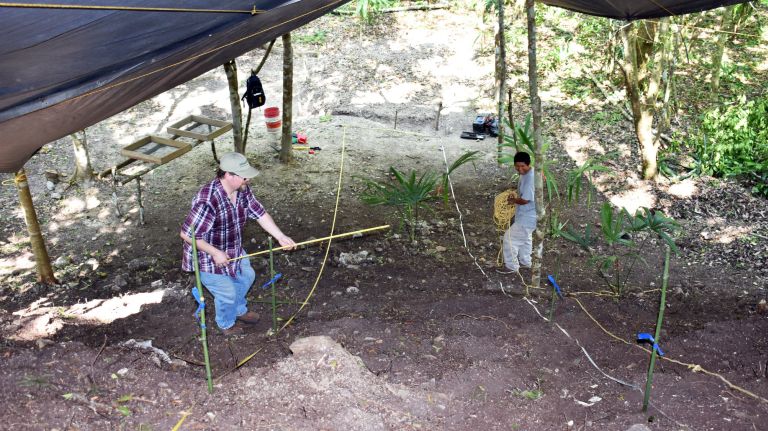
Nicaela Cartagena says the geology class that changed the course of her college education started out as just another credit to boost her GPA at Bronx Community College in 2014.
“I came to BCC to do medicine and it wasn’t going the way I was planning, so I didn’t find any enjoyment in doing my studies,” Cartagena, 27, said. But geology piqued her interest, and she switched majors.
Now a senior at the City College of New York, Cartagena is part of a team of researchers that helped excavate and identify shards of a rare marble vase from an ancient Maya burial site in Belize.
Bronx Community College Chemistry Professor Sheldon Skaggs has brought 12 BCC students to the Pacbitun, Belize site for sponsored summer excavation trips since 2014.

But it wasn’t until 2017 that his team discovered 20 fragments of a marble vase with distinctive swirls and crescents while excavating a nine-by-nine-foot site in a royal burial plot. (Skaggs also works with Dr. Terry Powis of Kennesaw State University in Georgia, who received an archeology permit from the Belize government.)
"Usually we only find ceramics,” recalled Cartagena, who after two summers on the field research team became a lab director at Pacbitun, where she works during summer breaks. “We cleaned it all up and it was just amazing to see something we’ve never, ever seen in that whole Belize river valley.”
Skaggs and his team were able to date the vase to between 800 and 900 AD, an important period in regional history when the Maya civilization was collapsing. Through isotope analysis, they matched the piece to artifacts from a site roughly 150 miles away in northwest Honduras — indicating likely trade between the regions. Their findings were published this August in the Journal of Archeological Science.
The vase is “something you give at a royal wedding,” Skagg’s said.
According to Skaggs, archeological digs have not only gotten BCC students excited about science but helped set them on a path to a four-year college, too.

“Not everyone goes in as deeply as Nicaela does, but they’ve all transferred successfully to four-year colleges and are working on graduating,” he explained. “I use archeology as a way to get students interested in science because it’s a little more approachable than some dry lab work somewhere.”
But the trips are expensive, costing between $2,000 and $3,000 per student. Past support has come from CUNY’s Community College Research Grant Program, the CUNY Research Scholars Program and the Alphawood Foundation.
“Last year, I wasn’t able to get a grant so I wasn’t able to bring a student down,” Skaggs said. “One time we had students earn about $1,000 total through a GoFundMe site, but I don’t like that. These are not privileged students, so having donations or grants is what allows us to do this.”


















